Siding Nailer vs Roofing Nailer: Which is Best for Your Needs?
-
- Last updated:
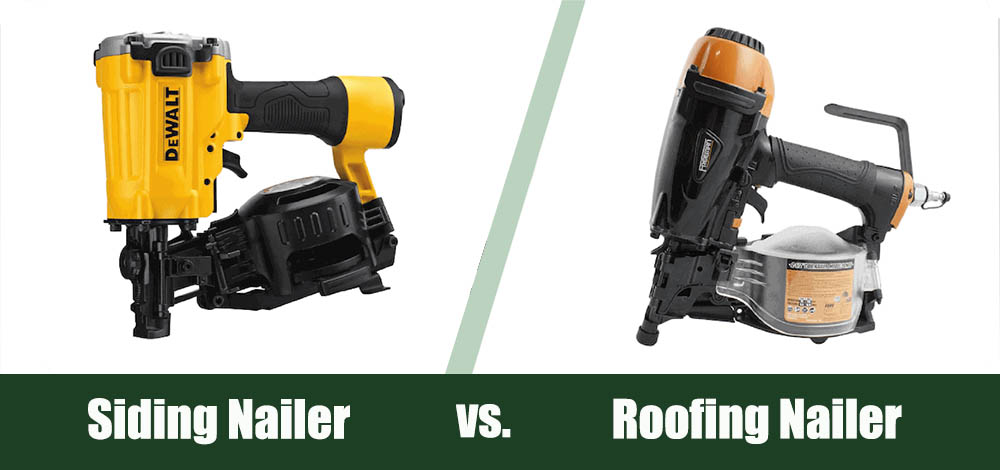

They look similar and perform the same task, but that doesn’t mean that siding nailers and roof nailers are the same tool. Both tools are coil nailers built to drive nails into wood, but you can’t use them interchangeably. You might have noticed the price difference between them already, but the reasons for the price difference really separate these nail guns.
Each nailer is named for the function it performs. Siding nailers are for installing siding, and roofing nailers are meant for installing roofing. But did you realize that different nails are used for each task? Let’s take a closer look at each of these valuable tools and see which one is the best choice for your situation.

Siding Nailer Overview
At its heart, a siding nailer is a coiler nailer designed for installing siding onto exterior walls. They look the same as roofing nailers and even operate in the same basic fashion. The main difference between these two types of nail guns is in the nails they use.
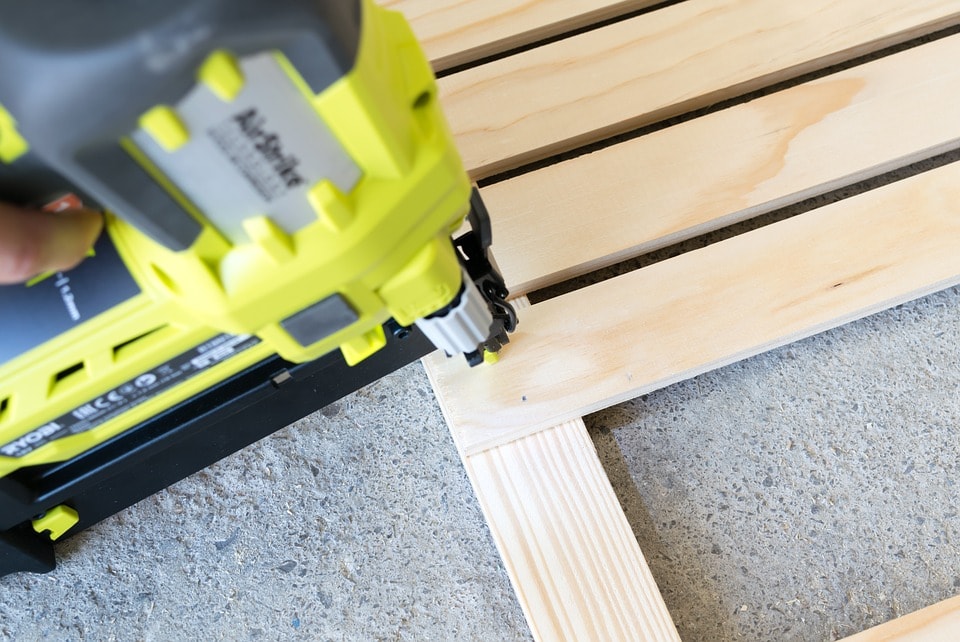
These Nails Don’t Come Out
Nails meant for holding up siding are intended to stay put. Siding isn’t meant to be replaced as often as roofing, so the nails are ring-shanked to provide a better hold. They also have small heads for the same reason.
Don’t Fire it Flush
Most of the time, when you install a nail, you’re going to install it flush with the surface. But that’s not the case with a siding nail. Since siding is susceptible to the whims of nature, it’s going to experience a lot of expansion and contraction. Because of this, siding nails aren’t installed flush. Instead, a small gap is left between the head of the nail and the siding to allow for normal expansion and contraction. Otherwise, your siding would crack.
Adjustable Depth
Since siding is installed on a vertical surface, holding it up requires a lot more force than holding on roofing that’s lying on a horizontal surface. As a result, siding nails are much longer than roofing nails, often as long as 2½ inches. To account for that, siding nailers have adjustable depth controls to allow you to alter how far the nail is being driven.
Longer Nails, Larger Price
Siding nailers are more expensive than roofing nailers, which drives some to look at roofing nailers as an alternative. But if you need to drive long nails, only the siding nailer will let you do it.
- Adjustable depth
- The nails aren’t meant to be removed
- Can use nails of different sizes
- More expensive

Roofing Nailer Overview
Looking at them side by side, it can still be challenging to tell a roofing nailer apart from a siding nailer. Since roofing nailers are much cheaper, many would prefer to purchase one to perform the job of a siding nailer. But these fire completely different fasteners, so that’s not going to work the way you might hope.
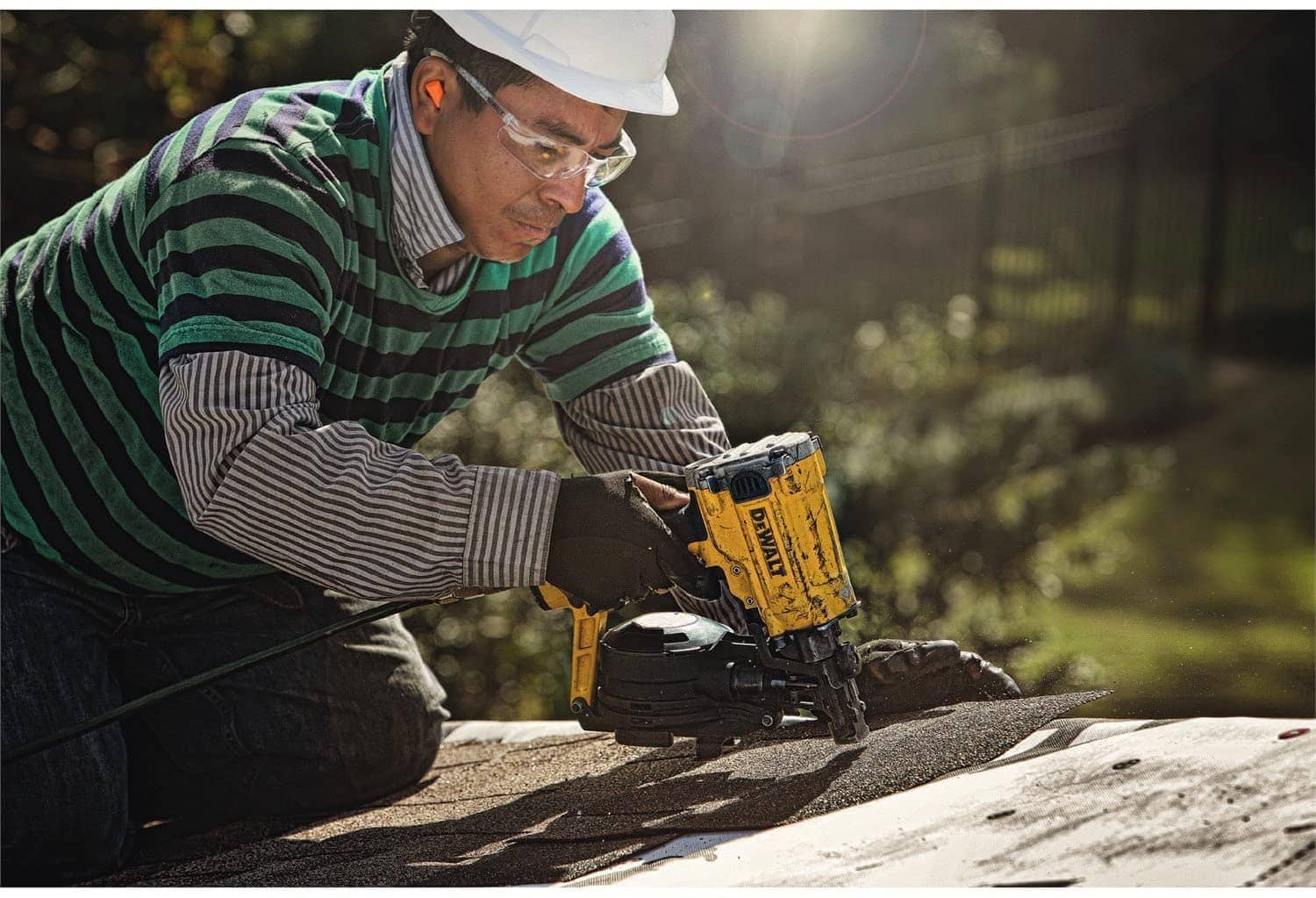
These Nails Need to Come Out
Unlike siding nails, roofing nails need to come out. Roof shingles need to be replaced occasionally so the nails have larger heads that are easier to grab. They also have smooth shanks that will pull out much easier than the ringed shanks on siding nails.
Punching Through Asphalt
Roofing nailers have to punch their nails through asphalt shingles, which is an arguably more difficult job than nailing through the siding. But since these nails have to hold the shingles flush to the roof, the nails are installed flush.
Shorter Nails
Installing shingles doesn’t require long nails since they’re thin. Therefore, roofing nails are generally no longer than 1¾ inches. This is the difference that sets a roofing nailer apart from a siding nailer. Siding nailers use much longer nails that start where roofing nails end.
Smaller Nails, Smaller Price Tag
Since they use smaller nails, roofing nailers have a smaller price tag. That is probably the most appealing aspect of a roofing nailer and why some people would prefer it if it serves their needs.
- Affordable
- Very easy to use
- Depth isn’t adjustable
- Meant to work only with shorter nails
- The nails are designed for removal
See Also:
The Difference is in the Nails
Between these two very similar tools, the main difference is the nails. Siding nails and roofing nails are designed to perform different jobs, so they have different compositions. You can’t fire roofing nails from a siding nailer or vice versa, so it’s essential to make sure you’re using the right fastener and the right nailer for the job.
Siding Nails
Siding nails are longer than roofing nails since they have to hold up more weight. They’re not designed to be removed, so they have smaller diameter heads and ringed shanks that grip the wood better.
Roofing Nails
Roofing nails are meant to be removed and have larger heads that are easier to grab onto when they need to come out. They also have smooth shanks that don’t grip the wood as tightly as the ringed shanks on siding nails. Finally, roofing nails are much shorter since they don’t have to hold up much weight and only punch through a thin shingle and a single layer of wood.
| Siding Nails | Roofing Nails |
| Designed to be permanent | Designed to be removed |
| Smaller head | Larger Head |
| Ring shank | Smooth shank |
| Up to 2.5 inches long | No longer than 1.75 inches |

Quick Look: Our Top Choices
| Image | Product | Details | |
|---|---|---|---|
Our Favorite Siding Nailer
 |
DEWALT DW66C-1 15-Degree Coil Siding and Fencing Nailer |
|
CHECK PRICE |
Our Favorite Roofing Nailer
 |
DEWALT DW45RN Pneumatic Coil Roofing Nailer |
|
CHECK PRICE |
Our Favorite Siding Nailer: DEWALT DW66C-1 15-Degree Coil Siding and Fencing Nailer
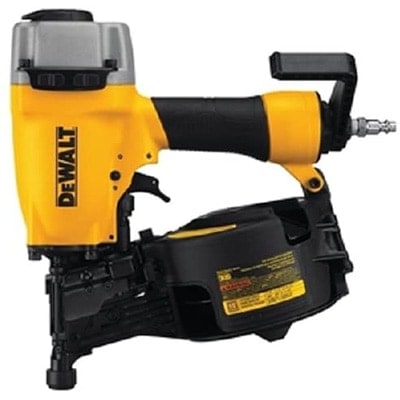
Weighing just under five pounds, this DEWALT siding nailer is built to work all day long. It works with nails from 1.5 to 2.5 inches long and features a tool-free depth adjustment that makes it easy to dial in the perfect depth on the go. It holds 300 nails at a time and comes with DEWALT’s 3-year warranty, making it an excellent choice for any type of siding work.
Our Favorite Roofing Nailer: DEWALT DW45RN Pneumatic Coil Roofing Nailer
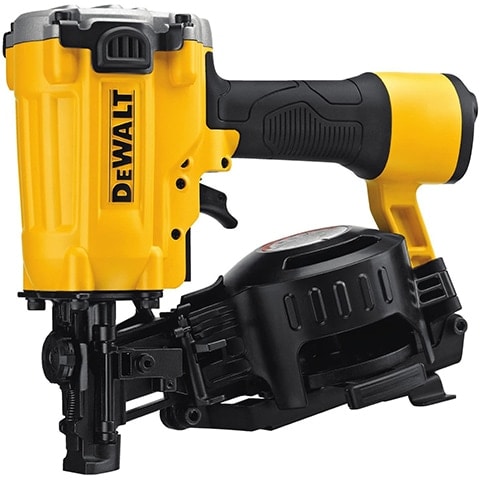
Although it’s priced lower than the siding nailer, this roofing nailer is also from DEWALT and features the same quality build and feel. It weighs a bit more at 5.2 pounds and can drive up to 10 nails per second. There’s a depth adjustment wheel with numbered detents to help you set the correct depth regardless of the materials you’re using. It can use nails up to 1.75 inches long.

Conclusion
While these tools could be used for jobs other than originally intended, they’re best suited for specific situations. Just remember the main difference between them: the fasteners they use. If you’re installing siding, you need a siding nailer. For installing roofing, a roofing nailer is the best choice. If you work on other projects, pick the tool designed for the fasteners you’re using for better results.
Contents

